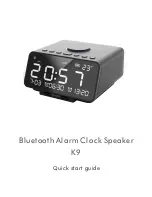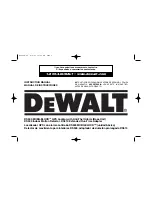
NFPA 72 states: “Smoke alarms in rooms with ceiling slopes greater than
1 ft in 8 ft (.3m in 2.4 m) horizontally shall be located on the high side of
the room.” NFPA 72 states: “A row of detectors shall be spaced and locat-
ed within 3 ft (0.9m) of the peak of the ceiling measured horizontally.”
2. RECOMMENDED LOCATIONS FOR ALARMS
• Locate the smoke alarms in all sleeping areas. Try to monitor the exit path
as the bedrooms are usually farthest from the exit. If more than one sleeping
area exists, locate additional alarms in each sleeping area.
• Locate additional alarms to monitor any stairway as stairways act like
chimneys for smoke and heat.
• Locate at least one alarm on every floor level.
• Locate an alarm in every bedroom.
• Locate an alarm in every room where electrical appliances are operated
(i.e. portable heaters or humidifiers).
• Locate an alarm in every room where someone sleeps with the door
closed. The closed door may prevent an alarm not located in that room
from waking the sleeper.
• Smoke, heat, and combustion products rise to the ceiling and spread
horizontally. Mounting the smoke alarm on the ceiling in the center of
the room places it closest to all points in the room. Ceiling mounting is
preferred in ordinary residential construction.
ANYWHERE ALONG
THIS BOLD SURFACE
30.5 cm
Locations permitted for smoke
alarms and smoke detectors
on tray-shaped ceilings.
ANYWHERE ALONG
THIS BOLD SURFACE
30.5 cm
Locations permitted for smoke
alarms and smoke detectors
on tray-shaped ceilings.
FIGURE 1
ANYWHERE ALONG
THIS BOLD SURFACE
30.5 cm
Locations permitted for smoke
alarms and smoke detectors
on tray-shaped ceilings.
FIGURE 2
FIGURE 3
1. LIMITATIONS OF SMOKE ALARMS
WARNING: PLEASE READ CAREFULLY AND THOROUGHLY
• NFPA 72 states: Life safety from fire in residential occupancies is based pri-
marily on early notification to occupants of the need to escape, followed by
the appropriate egress actions by those occupants.
• Fire warning systems for dwelling units are capable of protecting about half
of the occupants in potentially fatal fires. Victims are often intimate with
the fire, too old or young, or physically or mentally impaired such that they
cannot escape even when warned early enough that escape should be pos-
sible. For these people, other strategies such as protection-in-place or assisted
escape or rescue are necessary.
• Smoke alarms are devices that can provide early warning of possible fires at a
reasonable cost; however, alarms have sensing limitations. Ionization sensing
alarms may detect invisible fire particles (associated with fast flaming fires)
sooner than photoelectric alarms. Photoelectric sensing alarms may detect
visible fire particles (associated with slow smoldering fires) sooner than ion-
ization alarms. Home fires develop in different ways and are often unpredict-
able. For maximum protection, Kidde recommends that both Ionization and
Photoelectric alarms be installed.
• A battery powered alarm must have a battery of the specified type, in good
condition and installed properly.
• Smoke alarms must be tested regularly to make sure the battery and the
alarm circuits are in good operating condition.
• Smoke alarms cannot provide an alarm if smoke does not reach the alarm.
Therefore, smoke alarms may not sense fires starting in chimneys, walls, on
roofs, on the other side of a closed door or on a different floor.
• If the alarm is located outside the bedroom or on a different floor, it may not
wake up a sound sleeper.
• The use of alcohol or drugs may also impair one’s ability to hear the smoke
alarm. For maximum protection, a smoke alarm should be installed in each
sleeping area on every level of a home.
This alarm is not intended to alert hearing impaired individuals.



























